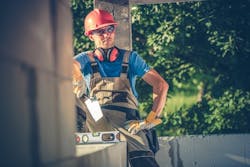How Long Will the Pandemic Delay Housing Construction?
Housing demand may be bouncing back, but builders will still face major hurdles in the coming months as they try to regain their pre-coronavirus speed. It won’t be as easy as everything snapping back into place once a state reopens: Local offices may slow down processing permits, the supply chain may delay materials , and until there is a vaccine or a reliable treatment, breaks in the construction labor force will always be at risk, according to a housing expert from the Joint Center for Housing Studies of Harvard University. Even after the economies reopen, construction sites will likely have to continue social distancing and other safety precautions that slow down production but keep workers safe.
COVID-19 will have many effects on housing markets in the coming weeks and years. One of the near-term consequences of the spread of and response to the virus is likely to be delayed construction due to office closures, construction moratoria, supply chain disruptions, and risks to the labor force.
Before the pandemic, multifamily housing construction was booming, with a new cycle high of 403,000 starts in 2019. Single-family construction had remained depressed since the last recession, with 12 straight years of starts under 1 million, but were growing, albeit slowly, over the last eight years, reaching 888,000 starts in 2019. The construction pipeline was also robust with 1.2 million units currently under construction, including 652,000 units in multifamily buildings. The housing market was set to have some big completion numbers in coming years, but delays in construction mean those numbers almost certainly will be lower than expected.
There are four immediate reasons why projects might take longer because of the pandemic, and the extent that each of these might delay construction varies widely by jurisdiction:
